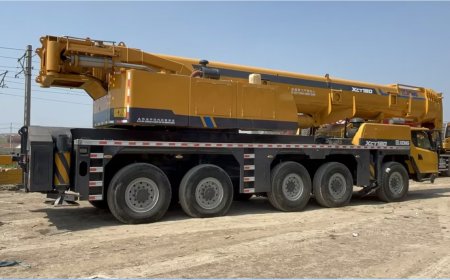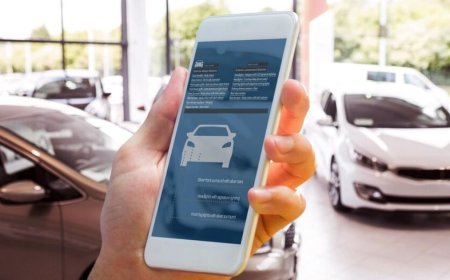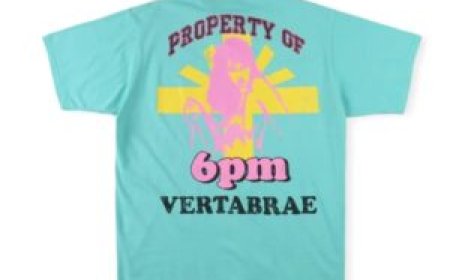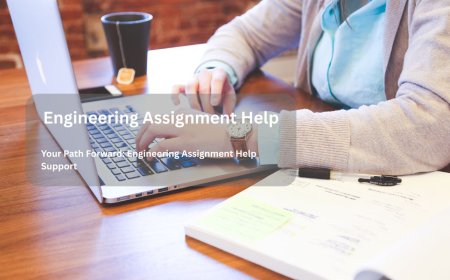How to take the Memphis trolley
How to Take the Memphis Trolley The Memphis trolley system is more than just a nostalgic ride through the heart of one of America’s most culturally rich cities—it’s a vital, affordable, and scenic transportation option for residents, tourists, and commuters alike. Operated by the Memphis Area Transit Authority (MATA), the trolley network connects key downtown landmarks, historic districts, and cul
How to Take the Memphis Trolley
The Memphis trolley system is more than just a nostalgic ride through the heart of one of America’s most culturally rich cities—it’s a vital, affordable, and scenic transportation option for residents, tourists, and commuters alike. Operated by the Memphis Area Transit Authority (MATA), the trolley network connects key downtown landmarks, historic districts, and cultural attractions with a level of accessibility and charm unmatched by buses or ride-sharing services. Whether you’re visiting Graceland, exploring Beale Street, or attending an event at the FedExForum, knowing how to take the Memphis trolley can transform your experience from stressful to seamless. This guide provides a comprehensive, step-by-step walkthrough of using the trolley system, from planning your route to boarding and riding with confidence. By the end of this tutorial, you’ll understand not only how to ride the trolley, but how to do so efficiently, safely, and in a way that enhances your connection to Memphis’s unique urban fabric.
Step-by-Step Guide
Using the Memphis trolley requires minimal preparation, but following the correct sequence ensures a smooth, hassle-free journey. Below is a detailed breakdown of each step, from initial planning to disembarking at your destination.
1. Identify Your Destination and Route
Before heading out, determine where you need to go. The Memphis trolley system currently operates two main lines: the Main Street Trolley and the Riverfront Trolley. The Main Street Trolley runs from the Riverfront Transit Center near the Mississippi River, up Main Street through the Central Business District, past the Orpheum Theatre, and terminates at the Memphis Cook Convention Center. The Riverfront Trolley loops along the riverfront, connecting the Riverfront Transit Center to the National Civil Rights Museum, the Memphis Pyramid, and the Mud Island River Park.
Use the MATA website or mobile app to view real-time maps and route schedules. Each route has clearly marked stops with signage and digital displays showing estimated arrival times. Note the name of your starting stop and your destination stop—this will help you confirm you’re on the correct line and prevent misboarding.
2. Check Operating Hours and Schedule
The trolleys operate on a fixed schedule that varies by day of the week. On weekdays (Monday through Friday), service typically runs from 6:00 a.m. to 8:00 p.m. On weekends (Saturday and Sunday), hours extend from 8:00 a.m. to 9:00 p.m. During major events—such as the Memphis in May festival or Grizzlies games—service may be extended or rerouted temporarily. Always verify the current schedule before you travel, especially during holidays or inclement weather.
Remember: Trolleys run approximately every 20 to 30 minutes during peak hours and every 40 to 60 minutes during off-peak times. Plan accordingly to minimize waiting. If you’re visiting during a busy evening on Beale Street, expect higher passenger volume and potential delays.
3. Purchase or Prepare Your Fare
The Memphis trolley operates on a flat-fare system. As of the latest update, a single ride costs $1.50. You can pay using exact change in cash, or purchase a reloadable MATA card at select retail locations, including the Riverfront Transit Center and the MATA administrative office. MATA cards are ideal for frequent riders—they allow you to load multiple rides, store passes, and reduce boarding time.
Mobile payment is not currently supported on the trolleys, so ensure you have cash or a card ready before the vehicle arrives. Drivers do not provide change, so always have the exact fare. If you plan to ride multiple times in a day, consider purchasing a $4.00 day pass, which grants unlimited rides on all MATA buses and trolleys for 24 hours.
4. Locate Your Boarding Stop
Trolley stops are marked with distinctive green and white signs featuring the trolley logo and route number. Most stops include a shelter, bench, and a digital display showing the next arrival time. Stops are located at major intersections and near key attractions—such as the Peabody Hotel, the Memphis Brooks Museum of Art, and the National Civil Rights Museum.
Always stand on the correct side of the street. Trolleys travel in both directions, and boarding on the wrong side will delay your trip. Look for directional indicators on the sign: “To Riverfront” or “To Convention Center” will clarify your direction. If unsure, ask a local or check the MATA app for real-time stop confirmation.
5. Board the Trolley
When the trolley arrives, wait for passengers to exit before stepping on. The trolley has low-floor access, making boarding easy for wheelchairs, strollers, and bicycles. If you have a MATA card, tap it on the reader near the front door. If paying with cash, insert the exact fare into the fare box located next to the driver. No receipt is issued for cash payments, but your fare is recorded electronically.
Do not block the door or linger in the aisle. Move toward the center or rear of the vehicle to allow others to board. Trolleys are equipped with handrails and designated seating areas. Priority seating is reserved for seniors, pregnant individuals, and those with disabilities—please yield these seats if needed.
6. Ride and Monitor Your Stop
Once aboard, listen for automated announcements that call out upcoming stops. These are supplemented by visual displays above the doors that show the next stop name and route number. If you’re unfamiliar with the area, keep your phone or printed map handy to cross-reference your destination.
There are no conductors on board, so you are responsible for knowing when to exit. If you’re uncertain, ask the driver when you board: “Will you be stopping near [landmark]?” Most drivers are happy to confirm your stop. Do not wait until the last moment—signal your intent to exit by pulling the yellow cord above the window or pressing the stop button near the door at least one stop in advance.
7. Disembark Safely
When your stop is announced, prepare to exit. Wait for the trolley to come to a complete stop before standing. Exit through the rear door if possible—this keeps the front door clear for new passengers. Step off carefully; trolley platforms can be uneven, especially near curbs.
Once you’ve exited, do not linger in the street. Move to the sidewalk or designated waiting area. If you’re transferring to another route, check the nearby stop for your next connection. Many trolley stops double as bus hubs, allowing seamless transfers between modes of transit.
8. Transfer Between Routes
If your journey requires switching from the Main Street Trolley to the Riverfront Trolley—or to a MATA bus—you can do so at the Riverfront Transit Center, located at the corner of Front Street and Union Avenue. This is the central hub of the system and the only location where both trolley lines intersect.
With a day pass or MATA card, transfers are free within two hours of your initial payment. If paying cash, you’ll need to pay again unless you have a day pass. Always confirm your transfer point before boarding your first trolley. The MATA app includes a trip planner that shows optimal connections and estimated transfer times.
Best Practices
Mastering the Memphis trolley isn’t just about knowing the steps—it’s about adopting habits that make your experience efficient, respectful, and enjoyable. Here are key best practices to follow every time you ride.
Plan Ahead, Especially During Peak Times
Memphis trolleys are popular with tourists and locals alike, particularly on weekends and during festivals. Avoid boarding at the busiest stops—like Beale Street or the Peabody Hotel—during Friday and Saturday evenings. If possible, arrive 5–10 minutes before the scheduled departure to secure a seat and avoid crowding.
Use the MATA App for Real-Time Tracking
The official MATA app (available on iOS and Android) provides live trolley locations, arrival predictions, service alerts, and route maps. It’s the most reliable tool for avoiding missed connections or unexpected delays. Even if you’re not tech-savvy, the interface is intuitive: simply select your route, tap “Next Arrival,” and watch the trolley’s progress on a map.
Keep Valuables Secure
While the Memphis trolley has an excellent safety record, it’s always wise to keep personal belongings close. Avoid placing bags on the floor or leaving phones unattended. Pickpocketing is rare, but crowded trolleys during events can present opportunities for theft. Use cross-body bags and keep wallets in front pockets.
Respect the Historic Nature of the Vehicles
The trolleys are restored 1920s-style streetcars, preserved as part of Memphis’s cultural heritage. Avoid leaning on doors, placing feet on seats, or using the handrails for anything other than balance. Do not attempt to touch or photograph the interior mechanisms—these are delicate historical artifacts.
Be Mindful of Noise and Space
Keep conversations at a moderate volume, especially during early morning or late evening rides. Use headphones for music or videos. If you’re traveling with children, ensure they remain seated and do not run or shout. Trolleys are shared public space—considerate behavior ensures comfort for everyone.
Prepare for Weather
Memphis experiences hot, humid summers and occasional winter storms. Trolley stops are sheltered, but the vehicles themselves are open-air in sections. Bring water in summer, a light jacket in spring or fall, and an umbrella during rain. Some stops lack coverage—plan accordingly.
Know Your Alternatives
While the trolley is convenient for downtown travel, it doesn’t reach all neighborhoods. If your destination is outside the trolley corridor—such as the University of Memphis or the Memphis International Airport—combine your ride with a MATA bus. The MATA app’s trip planner will suggest the best combination of routes. Always have a backup plan.
Tools and Resources
Successful navigation of the Memphis trolley relies on access to accurate, up-to-date information. Below are the essential tools and resources you should bookmark, download, or carry with you.
Official MATA Website
The Memphis Area Transit Authority’s website (www.mata.org) is the primary source for route maps, schedules, fare updates, and service advisories. The site includes downloadable PDFs of all trolley routes, real-time tracker links, and a comprehensive FAQ section. Bookmark the “Trolley Routes” page for quick reference.
MATA Mobile App
The MATA app is indispensable for riders. It features live vehicle tracking, push notifications for service changes, and a trip planner that calculates the fastest route using multiple transit options. The app also allows you to store digital passes and view historical ride data. Download it before your visit—offline maps are not available, so ensure you have data access or Wi-Fi.
Printed Route Maps
While digital tools are convenient, printed maps are invaluable during power outages or poor signal areas. Free copies are available at the Riverfront Transit Center, the Memphis Convention and Visitors Bureau, the Memphis Public Library, and select hotels. Look for the “Trolley System Map” brochure—it includes all stops, landmarks, and transfer points.
Google Maps and Transit Mode
Google Maps integrates MATA’s transit data and offers reliable step-by-step directions for trolley routes. When planning a trip, select “Transit” mode and ensure the route includes “Memphis Trolley” as a segment. While not always as precise as the MATA app, Google Maps is excellent for first-time users unfamiliar with local terminology.
Visitor Centers and Tourist Information Desks
Located in the Riverfront Transit Center and at the Peabody Hotel, these desks offer free maps, brochures, and personalized assistance. Staff can help you identify the best trolley route to your destination, suggest nearby attractions, and even provide discounted combo tickets for trolley rides and museum admissions.
Local Transit Advocacy Groups
Organizations like “Memphis Transit Riders United” maintain community forums and social media pages where riders share real-time updates, safety tips, and feedback on service changes. Following these groups can give you insight into upcoming service enhancements or temporary detours not yet posted on official channels.
QR Code Stop Identifiers
Many trolley stops now feature QR codes on signage. Scanning these with your phone opens a pop-up with stop-specific information, including nearby attractions, parking options, and accessibility features. This is especially useful for tourists unfamiliar with street names.
Real Examples
Understanding how to use the Memphis trolley becomes clearer when applied to real-world scenarios. Below are three detailed examples of common trips, showing how to plan, board, and navigate with confidence.
Example 1: From the Peabody Hotel to Beale Street
You’re staying at the historic Peabody Hotel and want to experience Beale Street’s live music and dining scene in the evening.
- Check the MATA app: The Main Street Trolley stops directly in front of the Peabody Hotel at “Peabody Place.”
- Confirm the schedule: The next trolley arrives in 12 minutes heading toward “Convention Center.”
- Board the trolley and pay $1.50 in cash. Sit near the front for easy viewing of stop announcements.
- Listen for “Beale Street & 2nd Street”—this is your stop. Pull the cord 30 seconds before arrival.
- Exit and walk one block east to reach the heart of Beale Street. Total ride time: 8 minutes.
Tip: Return late? The trolley runs until 9:00 p.m. on weekends. If you miss the last ride, use a rideshare app or walk the 1.2 miles back—Beale Street is well-lit and pedestrian-friendly.
Example 2: From the National Civil Rights Museum to the Memphis Pyramid
You’ve spent the morning at the National Civil Rights Museum and want to visit the iconic Memphis Pyramid, home to the Bass Pro Shops and a viewing deck.
- Exit the museum and walk 2 minutes to the “Civil Rights Museum” trolley stop on the Riverfront Trolley line.
- Check the MATA app: The next Riverfront Trolley is due in 15 minutes, heading clockwise toward “Pyramid.”
- Board and pay with your MATA card. The ride takes 10 minutes with one intermediate stop at Mud Island.
- Announcement: “Next stop: The Pyramid.” Exit at the designated platform. Follow signs to the Bass Pro Shops entrance.
Tip: The Riverfront Trolley runs less frequently than the Main Street line—plan your return trip in advance. The last trolley departs the Pyramid at 8:30 p.m. on weekends.
Example 3: Day Trip from Riverfront Transit Center to Memphis Cook Convention Center
You’re attending a conference at the Memphis Cook Convention Center and want to avoid parking fees and traffic.
- Arrive at the Riverfront Transit Center at 8:15 a.m. Purchase a $4 day pass at the kiosk.
- Board the Main Street Trolley heading toward “Convention Center.”
- Pass through downtown, noting stops at the Orpheum Theatre, the FedExForum, and the Memphis Public Library.
- Arrive at “Convention Center” stop at 8:45 a.m. Exit and follow signs to the main entrance.
- After your event, use your day pass to ride back to the Riverfront Transit Center, then transfer to a bus heading to your hotel.
Tip: The convention center stop is a major hub. If you need to grab lunch, the trolley passes multiple food vendors and cafes within a 5-minute walk.
FAQs
Can I bring a bicycle on the Memphis trolley?
Yes, bicycles are permitted on all trolleys, but only during non-peak hours (9:30 a.m. to 3:30 p.m. on weekdays and all day on weekends). Bikes must be loaded through the rear door and secured in the designated bike rack. One bike per trolley is allowed at a time. Folding bikes may be carried onboard at any time.
Are the trolleys wheelchair accessible?
Yes. All trolleys are fully ADA-compliant with low-floor boarding, securement areas for wheelchairs and mobility scooters, and audio-visual stop announcements. Drivers are trained to assist with ramp deployment and securing devices. No advance notice is required.
Can I eat or drink on the trolley?
Food and non-alcoholic beverages are permitted, but consumption should be minimal and respectful. Avoid strong-smelling foods or open containers that could spill. Trash bins are available at major stops—please dispose of waste properly.
Do the trolleys run on holidays?
Service is reduced or suspended on major holidays such as Thanksgiving, Christmas Day, and New Year’s Day. Check the MATA website or app for holiday schedules at least 48 hours in advance. Some routes may operate on a Sunday schedule.
Is there free Wi-Fi on the trolleys?
No, Wi-Fi is not currently available on Memphis trolleys. However, most stops and downtown areas have public Wi-Fi access points provided by the city.
Can I use a debit or credit card to pay?
At this time, only cash or MATA cards are accepted for fare payment. Debit and credit cards cannot be used directly on the trolley. MATA cards can be purchased with cards at designated retail locations.
What if I miss my stop?
If you miss your stop, remain calm. The trolley will complete its full route and return. You can ride to the next terminal point and board a trolley heading back in the opposite direction. Use the MATA app to track the next vehicle. A day pass allows unlimited rides, so you won’t incur additional charges.
Are pets allowed on the trolley?
Service animals are always permitted. Other pets must be in a secure, enclosed carrier and may not occupy a seat. Pets are not allowed during peak hours (7–9 a.m. and 4–6 p.m.) unless they are service animals.
Can I bring a stroller?
Yes. Strollers are welcome on all trolleys. Fold them before boarding if space is limited, or keep them unfolded in the designated area near the front door. Drivers can assist with ramp deployment if needed.
Is the trolley safe at night?
Yes. The trolley system has a strong safety record, and routes are well-lit and patrolled by MATA security personnel during evening hours. Ridership remains high on weekends, especially along Beale Street. As with any urban transit system, remain aware of your surroundings and avoid isolated stops after midnight.
Conclusion
Learning how to take the Memphis trolley is more than a practical skill—it’s an invitation to experience the city as its residents do. Whether you’re tracing the footsteps of blues legends on Beale Street, reflecting at the National Civil Rights Museum, or simply enjoying the rhythm of downtown life, the trolley offers a slow, scenic, and deeply human way to connect with Memphis. Unlike cars or ride-shares, the trolley doesn’t rush you past landmarks—it lets you absorb them. It’s a moving window into the city’s soul.
By following the steps outlined in this guide—from planning your route and paying your fare to riding with awareness and respect—you’re not just using public transit; you’re participating in a living piece of urban heritage. The trolleys are more than vehicles; they’re symbols of community, sustainability, and historical preservation.
As you plan your next visit to Memphis, leave the rental car behind. Grab your day pass, download the MATA app, and step onto the trolley. Let the clatter of the wheels and the hum of the city guide you. You’ll discover that sometimes, the best way to see a place is not by rushing through it—but by riding slowly, intentionally, and with curiosity.


















